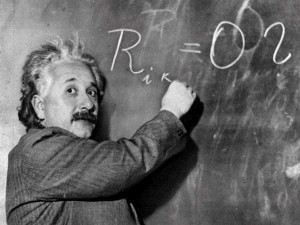
Researchers find link between creative genius and mental illness
By CAMILLE MOJICA REY
For decades, scientists have known that eminently creative individuals have a much higher rate of manic depression, or bipolar disorder, than does the general population. But few controlled studies have been done to build the link between mental illness and creativity. Now, Stanford researchers Connie Strong and Terence Ketter, MD, have taken the first steps toward exploring the relationship.
Using personality and temperament tests, they found healthy artists to be more similar in personality to individuals with manic depression than to healthy people in the general population. “My hunch is that emotional range, having an emotional broadband, is the bipolar patient’s advantage,” said Strong. “It isn’t the only thing going on, but something gives people with manic depression an edge, and I think its emotional range.”
Strong is a research manager in the Department of Psychiatry and Behavioural Science’s Bipolar Disorders Clinic and a doctoral candidate at the Pacific Graduate School. She presented preliminary results during a poster presentation last month at the annual meeting of the American Psychiatric Association in Philadelphia.
The current study is groundbreaking for psychiatric research in that it used separate control groups made up of both healthy, creative people and people from the general population.
Researchers administered standard personality, temperament and creativity tests to 47 people in the healthy control group, 48 patients with successfully treated bipolar disorder and 25 patients successfully treated for depression. She also tested 32 people in a healthy, creative control group.
This last group was comprised of Stanford graduate students enrolled in prestigious product design, creative writing and fine arts programs, including Stegner Fellows in writing, students in the interdisciplinary Joint Program in Design from the Department of Mechanical Engineering and studio arts master’s students from the Department of Art & Art History. All subjects were matched for age, gender, education and socioeconomic status.
Preliminary analysis showed that people in the control groups and recovered manic depressives were more open and more likely to be moody and neurotic than those in the healthy control group.
Moodiness and neuroticism are part of a group of characteristics researchers are calling “negative-affective traits” which also include mild, nonclinical forms of depression and bipolar disorder.
Though the data are preliminary, they provide a roadmap for psychiatric researchers looking to solve the genius/madness paradox depicted in the movie A Beautiful Mind, which tells the story of Nobel laureate John Nash.
The existing data need further review, Strong said. “And, we need to expand this to other groups,” she said.
How mood influences the performance of artists and genius scientists will be the subject of future research at Stanford. “We need to better understand the emotional side of what they do,” Strong said.
The study was funded by grants to Ketter, principal investigator and associate professor of psychiatry and behavioural science at Stanford, from the National Alliance for Research on Schizophrenia and Depression, and Abbott Laboratories.
Creative breakdown. New research from the Department of Psychiatry shows that unusually creative people share traits with the mentally ill. The lists below outline some characteristics studied by researchers.
Personality traits associated with creativity in artists
Openness to experience, especially fantasy-oriented imagination
Impulsivity, lack of conscientiousness
Anxiety, affective illness, emotional sensitivity
Drive, ambition
Nonconformity, norm-doubting, independence
Hostility, aloofness, unfriendliness, lack of warmth
Personality traits associated with creativity in scientists
Openness to experience, flexibility of thought
Drive, ambition, achievement
Self-confidence, dominance, arrogance, hostility
Autonomy, introversion, independence
Source: Handbook of Creativity. Cambridge University Press.

